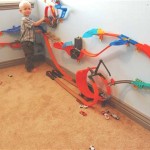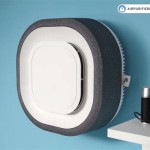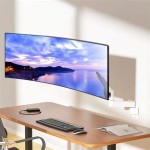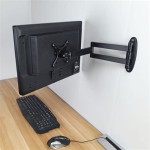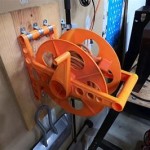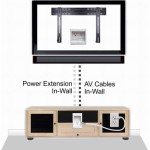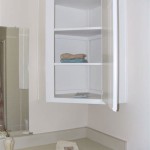How to Hide Cords on a Wall-Mounted TV Over a Fireplace
The placement of a television above a fireplace has become a popular design choice in many homes. This configuration offers a focal point for the room, blending entertainment with the cozy ambiance of a fireplace. However, one of the persistent challenges associated with this setup is managing the unsightly cords that dangle from the TV. These cords detract from the aesthetic appeal of the arrangement and can pose safety hazards if left unaddressed. This article provides a comprehensive guide to various methods for concealing these cords and achieving a clean, professional look.
Understanding the Challenges of Cord Management Above a Fireplace
Before delving into the solutions, it's crucial to understand the specific challenges presented by mounting a TV above a fireplace. The heat generated by the fireplace can potentially damage cords and electronic components, necessitating heat-resistant solutions. Furthermore, the height of the TV placement often requires longer cords, increasing the visibility and the need for effective concealment. Finally, building codes in some areas may restrict certain methods of cord concealment, particularly those involving running wires inside walls, requiring diligent research and adherence to local regulations.
Methods for Concealing Cords: In-Wall Solutions
One of the most aesthetically pleasing and effective methods for hiding cords is to run them inside the wall. This approach completely removes the cords from view, creating a seamless and uncluttered appearance. However, this method requires careful planning and execution, and may necessitate professional assistance.
Specifically, consider using a power bridge kit designed for in-wall cable management. These kits typically include two electrical boxes – one installed behind the TV and the other near an existing outlet below. The kit is then wired to safely pass the power from the TV to the outlet without violating electrical codes. Never run standard extension cords inside walls, as this poses a significant fire hazard and violates safety regulations. Power bridge kits are specifically designed and tested for in-wall use, ensuring safe and compliant operation.
Additionally, low-voltage cables like HDMI and coaxial cables can be run through the wall as well. Consider purchasing a brush plate to cover both the top and bottom holes in the wall. These plates allow the cables to easily pass through the wall while hiding the opening.
When running cords inside the wall, it's important to consider the potential for future changes. Choose a conduit or flexible tubing to house the cables. This allows for easy addition or replacement of cables in the future without having to tear into the wall again. This is particularly useful for HDMI cables, which are frequently upgraded as technology advances.
Prior to undertaking any in-wall wiring, it is essential to consult local building codes and, if necessary, hire a qualified electrician. Improper wiring can create a fire hazard and potentially void your homeowner's insurance policy. A professional electrician can ensure that the wiring is done safely and in compliance with all applicable regulations.
Methods for Concealing Cords: Surface-Mounted Solutions
For individuals who are not comfortable with in-wall wiring or who rent their homes, surface-mounted solutions offer a viable alternative. These methods involve concealing the cords on the surface of the wall, using various covers and channels to minimize their visibility.
One popular option is to use cord covers. These are typically made of plastic or metal and come in a variety of colors and sizes. They attach to the wall using adhesive strips or screws and provide a channel to run the cords through. Cord covers can be painted to match the wall color, further minimizing their visibility. Different styles of cord covers are available, including those with a rounded profile, a square profile, and even flexible options that can be bent around corners. Consider the decor of the room when selecting a cord cover to ensure that it blends in seamlessly.
Another surface-mounted solution involves using cable clips. These small, adhesive-backed clips are designed to hold individual cables against the wall. While they don't completely hide the cords, they can help to keep them organized and prevent them from dangling. Cable clips are particularly useful for managing multiple cords that run along the same path. Look for clips that are paintable or come in colors that match the wall for a more discreet appearance.
Fabric cord wraps are also a helpful tool. It completely envelops the cables in a fabric sleeve and uses either a zipper or velcro to enclose the cables. This method will hide the cables and also allows for multiple cords in the same wrap.
When using surface-mounted solutions, pay attention to the placement of the covers or clips. Run the cords along the edges of the wall or behind furniture to minimize their visibility. Consider using decorative elements, such as artwork or plants, to further camouflage the cords and covers.
Creative Cord Management Strategies
Beyond the standard in-wall and surface-mounted solutions, there are several creative strategies that can be employed to manage cords and enhance the overall aesthetic of the TV and fireplace arrangement.
Consider incorporating a media console or cabinet beneath the fireplace. This provides a convenient place to house the TV's components, such as a cable box, Blu-ray player, and gaming console. The cords can then be run directly from the TV to the components within the console, minimizing the need for long cords that run down the wall. Choose a console that complements the style of the fireplace and the room's decor. The style of the console will further detract from the lines running straight from the wall to the component.
Another creative strategy is to use decorative elements to camouflage the cords. For example, arrange a collection of decorative objects on a shelf or mantel to obscure the cords. Drape a decorative garland or vine across the wall to conceal the cords. The main goal is to strategically use decorative pieces to create a barrier against the cables in a design that will deter the eye.
For those who enjoy DIY projects, consider creating a custom cord concealment solution. This could involve building a decorative wooden box to house the cords, crafting a fabric panel to cover the cords, or even using repurposed materials, such as old books or branches, to create a unique and eye-catching cord cover. Customization lends itself to an additional layer of creativity for the fireplace and the television.
Wireless HDMI transmitters offer a futuristic approach to cord management. These devices transmit the HDMI signal from the source device to the TV wirelessly, eliminating the need for a physical HDMI cable. While they can be more expensive than traditional cord solutions, they offer a clean and clutter-free look. Ensure that the wireless HDMI transmitter is compatible with your TV and source devices before purchasing.
Ultimately, the best method for concealing cords on a wall-mounted TV above a fireplace will depend on individual preferences, budget, and skill level. By carefully considering the various options and implementing a well-planned strategy, it is possible to achieve a clean, professional look that enhances the beauty and functionality of the space.

Tv Wall Mount Installation With Wire Concealment Over Fireplace

How To Hide Tv Wires Above A Fireplace When You Can T Go Through The Wall Homes I Have Made

How To Hide Tv Wires Above A Fireplace When You Can T Go Through The Wall Homes I Have Made

How To Hide Cable Wires When Mounting Tv Over Fireplace Hometalk

Hiding Wires On Wall Mounted Tv Above Fireplace Extension Kit Powerbridge

How To Mount A Tv Over Brick Fireplace And Hide The Wires Designing Vibes Interior Design Diy Lifestyle

Tv Wall Mount Installation With Wire Concealment Over Fireplace

How To Hide Tv Wires Above A Fireplace When You Can T Go Through The Wall Homes I Have Made

Hide Cords Of A Tv Mounted Over Fireplace Powerbridge Above Mount

Learn How To Hide Tv Wires In A Wall Julie Blanner

